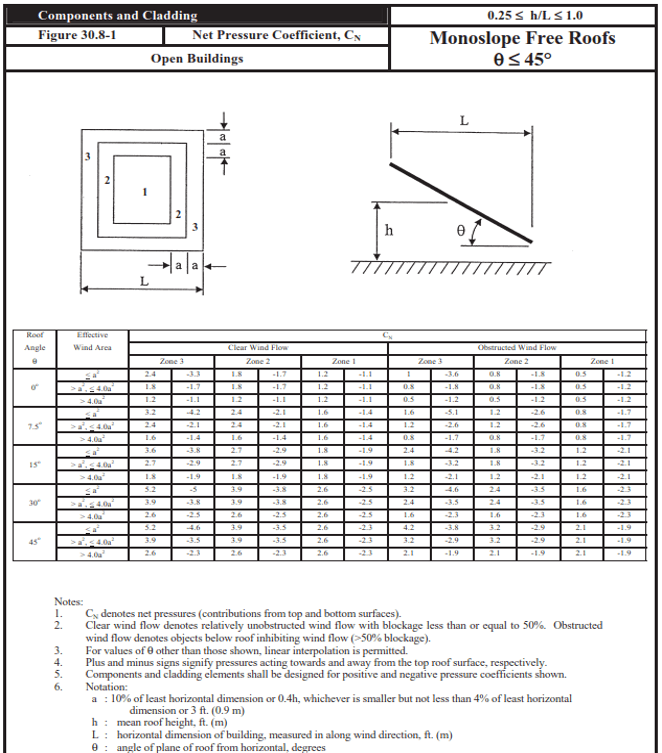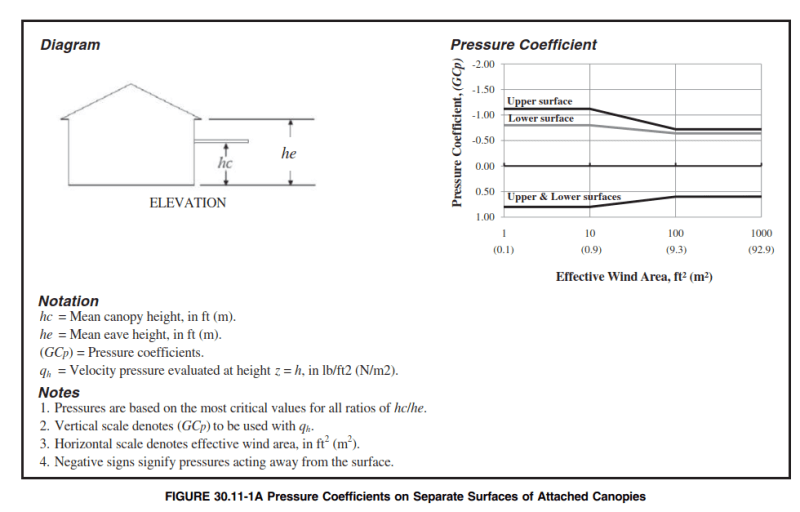smokiibear
Structural
- Sep 19, 2006
- 158
What is used for vertical wind loads for components and cladding on balcony's and decks? Flat roof overhang for upward and Roof for downward?
Follow along with the video below to see how to install our site as a web app on your home screen.
Note: This feature may not be available in some browsers.


" Pressure coefficients on separate surfaces of attached canopies on buildings" are used to design fasteners of the top and soffit elements that's why you have coefficients for both faces. Ref ASCE 7-22 Comm. C30.9smokiibear (Civil/Environmental)(OP) said:what is guiding principal of weather to use the Figure for "Pressure Coefficients on Separate Surfaces of Attached Canopies" vs "Net Pressure Coefficients on Attached Canopies Considering Simultaneous Contributions from Upper and Lower Surface"
I think this is to account for differences in the canopy and roof elevation when you refer to the "Net pressure coefficients considering simultaneous contributions from upper and lower surfaces on attached canopies on buildings". The height of the canopy relative to the roof affects your wind pressures (both +ve and -ve) as qh is used to compute the pressuresmokiibear (Civil/Environmental)(OP) said:why do they list hc & he?
If you're using figure 30.11-1A from ASCE 7-16, no. it is already combined in figure 30.11-1B Net pressure coefficients considering simultaneous contributions from upper and lower surfaces on attached canopies on buildings.Are upper surface and lower surface added together for upward and downward?
